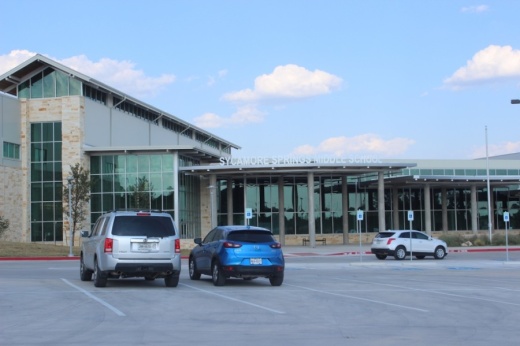Parent Jennifer Bristol said she received a note from the district informing her that a student her son shared a class with—which must have been a fellow football player, since he attends no other classes or activities on campus—had contracted the virus. Bristol’s son was not a close contact of the positive student, and so was not required to be tested himself. However, Bristol did have her son tested, and the test came back positive.
“My concern is that I’m not sure why we would not have received any sort of notification that he should be tested or that he should be quarantined. It seems like he should have been considered in close contact with that student [who tested positive],” she said.
Bristol was not the only parent who expressed confusion over the district’s protocol for contact tracing at the meeting. Another, Melanie Engels, questioned why football players and coaches were not required to quarantine sooner, claiming that an order to quarantine came only after a third player tested positive for the virus.
“With these outdoor and indoor sports that aren’t requiring masks, the risk of exposure is greater than in classes that have six feet of social distancing and mask requirements. For those exposed students to not be expected to quarantine and then take their exposure back to campus seems irresponsible,” Engels said.
DSISD declined to confirm how many SSMS football players had tested positive for COVID-19; a district representative said it is against policy to share identifying information about exposed students, including what activities or classes they are enrolled in. They did confirm, however, that the eighth grade football players at SSMS are currently in a required quarantine.
Of the district’s 16 student cases, 7 have been SSMS students, the greatest share of any DSISD school. That number still accounts for a small portion of the SSMS student population, around 0.08%. The 16 total students reported by the district as testing positive for COVID-19 account for around 0.022% of DSISD’s 7,257 enrolled students.
Only two of the SSMS cases are currently identified as active on DSISD’s COVID-19 dashboard as of Oct. 21, down from three on Oct. 19.
DSISD nurses and officials work with an epidemiologist at the Hays County Health Department to contact trace, and according to the district’s website, a number of factors and variables can determine who is considered a close contact of the infected student or staff member.
“DSISD moves through a comprehensive process to research each case. The answers to these questions determine who the close contacts are based on Health Department protocols. Every individual case has a specific set of conditions/variables that the district provides to the Health Department to make a determination,” a district representative said.
Those who are determined to be close contacts are “personally called," and are required to quarantine for at least 14 days, not returning to campus until that individual has tested negative for the virus and is determined not to be a transmission risk. Parents of students who share a class or activity with an infected individual will be notified via email as well, although not all of these students may have been determined to be close contacts—as in the case of Bristol’s son. Notifications to students not determined to be close contacts are "above and beyond" what is required by the Hays County Health Department, according to the district.
Furthermore, all parents and staff members connected to a given campus are notified when that campus has a positive case.
Since students in the Central Texas region have returned to campus, public health professionals have cited extracurricular activities—including both school-sponsored activities such as sports as well as parties and gatherings outside of school—as the most common catalyst for transmission among students. Classes themselves tend to be less of a risk, as more intensive preventive measures are consistently in place.
“The evidence we have at this stage is that [student cases] are almost exclusively, or perhaps exclusively, related to extracurricular activities, primarily football, and social gatherings outside of school,” Austin-Travis County Health Authority Dr. Mark Escott said on Oct. 20.
When asked if there was any specific health guidance for students who play football or participate in other sports and extracurricular activities, a district representative stressed the importance of common COVID-19 prevention protocols: "frequent hand-washing, sanitizing, masks, and social distancing to the greatest extent possible—and for parents to keep children home if they are ill and self-screen them each morning.”
Editor's note: This story was updated to clarify that the identity of the "third player" referred to by a parent is unconfirmed. Additionally, a correction was made Oct. 23 regarding the Hays County Health Department's requirements for contact tracing in schools; Dripping Springs ISD is not required to inform students who are determined not to be close contacts when a classmate tests positive for COVID-19, but a campus-wide notification that an individual on campus has tested positive is required, according to the district.





